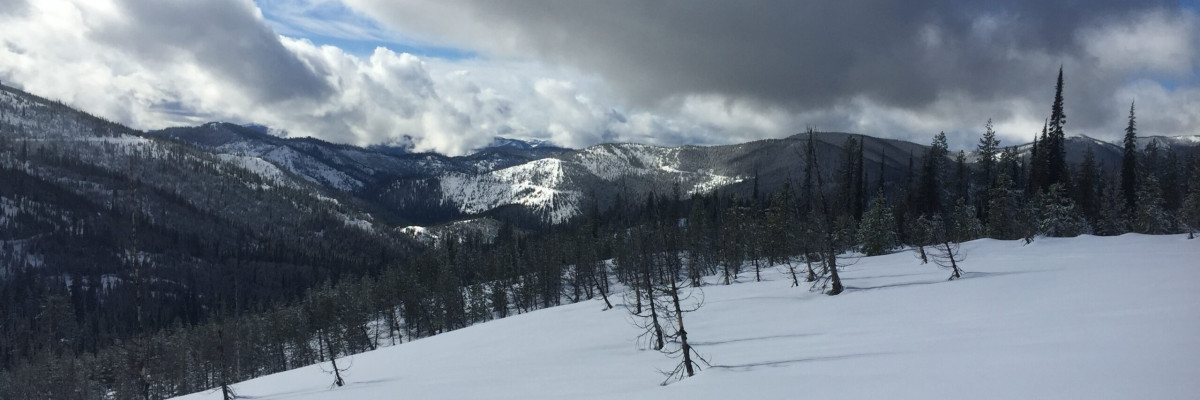The current avalanche danger for the West Central Montana backcountry is moderate above 7,000ft. Avalanches are possible in specific terrain at upper elevations. Below 7,000ft the avalanche danger is LOW and human triggered avalanches will be isolated.
Good morning, this is Logan King with the West Central Montana Avalanche Center’s avalanche advisory for Saturday, February 18, 2017. This danger rating does not apply to operating ski areas, expires at midnight tonight and is the sole responsibility of the U.S. Forest Service.
Weather and Snowpack
Overnight temperatures dropped below freezing and mountain temperatures currently range from 28-31 degrees. Overnight snow was minimal and only a few snotels this morning are showing accumulations of about 1 inch of new snow. Currently ridge top winds at Point 6 are out of the ESE and are sustained at 11mph gusting to 18mph. Conditions are similar in the southern Bitterroot, the wind at Deer Mountain is sustained at 12mph gusting to 19mph from the SE.
The primary avalanche concerns today will be persistent slabs and wind slabs above 7,000 feet. Near surface facets and buried surface hoar continue to be reactive in stability tests at upper elevations and in areas with a shallow snowpack. Persistent weak layers are reactive but isolated and therefore are hard to detect unless you dig in the snow. Take the time to dig and see if persistent weak layers are present and reactive while determining where to recreate. Sustained moderate winds have been reported for the last 48 hours and observers in the Southern Bitterroot reported wind slabs as a notable concern and we found significant signs of wind transport while ridding to Granite Pass yesterday.
Wet loose snow avalanches will be a concern today as there is a fair amount of moisture in a relatively warm snow pack. It will not take long this morning or much solar radiation to start to affect the snow surface. Keep an eye out for roller balls and pin wheels and if the snow surfaces starts to look saturated move towards more shaded aspects especially if you chose to recreate in areas with terrain traps.
Avalanche and Weather Outlook
Avalanche conditions look to remain fairly consistent today other than the increase of loose wet activity later in the day. Several weak disturbances are expected through the start of next week bringing periods of light showers to the region.
If you are out in the backcountry, please send us your observations, these are very helpful in producing the advisory. I will issue the next advisory on Tuesday, February 21, 2017.
Ski and ride safe.














